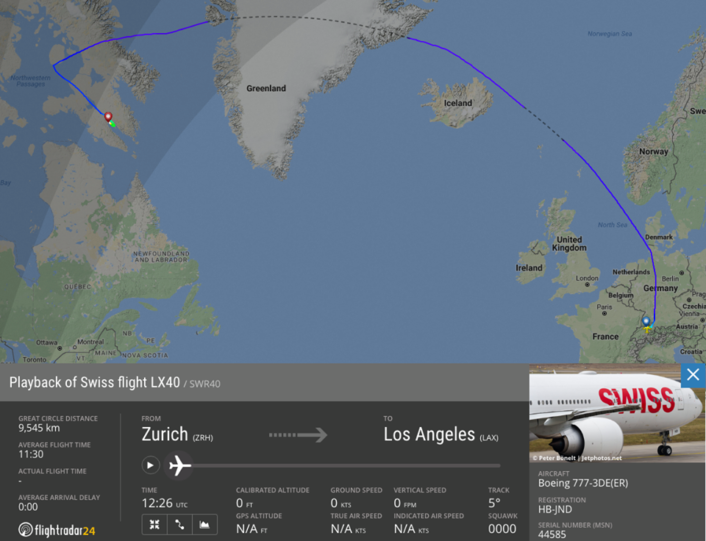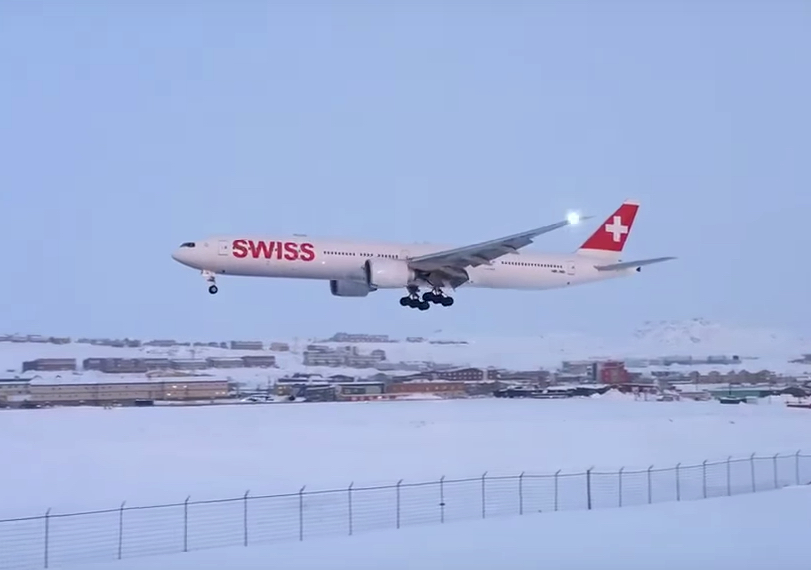Swiss Boeing 777-300 Bound for L.A. from Zurich Makes Arctic Emergency Landing of Snowy Runway
On Feb. 1, Swiss Airlines Boeing 777-300 operating as flight LX40 from Zurich, Switzerland, to Los Angeles, California, diverted to Iqaluit, Canada, capital of Nunavut in the Canadian Northern Territories.
The diversion was caused by an engine problem that required the shut down of the engine and an emergency diversion: actually, according to a statement later released by Swiss, a malfuction message caused the engine to automatically shutdown. The crew decided to make a precautionary landing.S
The selection of Iqaluit Airport (airport code: YFB) is remarkable since official sources state that Canada Border Services Agency (CBSA) officers at this airport have only small general aviation aircraft capacity with for more than 15 passengers.
The large Boeing 777-300 can carry up to 550 passengers in its dense-capacity interior configuration.

Video posted to YouTube show the large ETOPs (Extended Twin Operations) aircraft making a normal-looking approach and landing on a snowy runway. Additional video shows the aircraft being pushed-back with a ground tug once at the snowy airport.
Editor of TACAIRNET.com, Ian D’Costa, provided this report to The Aviationist.com. Video credit on YouTube is from @Tattuinee on Twitter.
D’Costa, a veteran aviation reporter and airport operations officer told The Aviationist.com, “[It is] unprecedented to say the least. A 777 has an ETOPS rating that would allow it to divert to Toronto, Montreal or Ottawa, or even Gander. So something must have been very concerning.”
Related articles
















